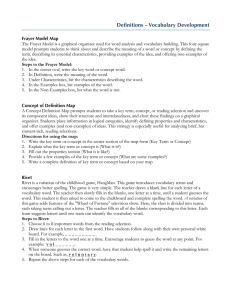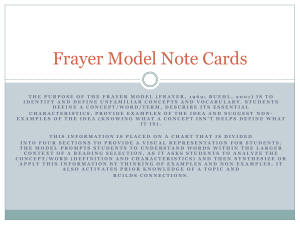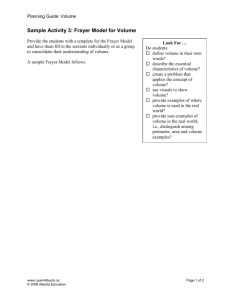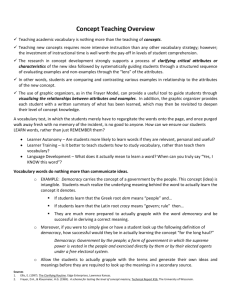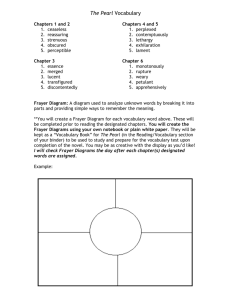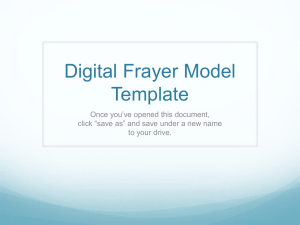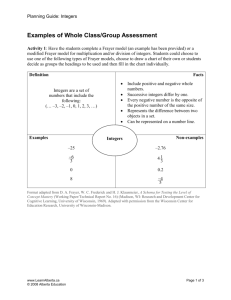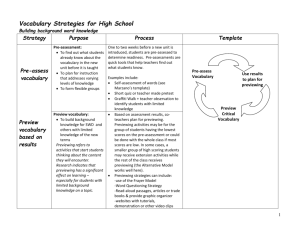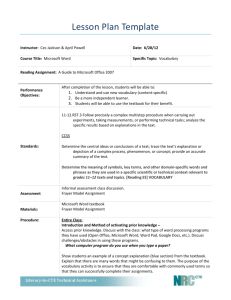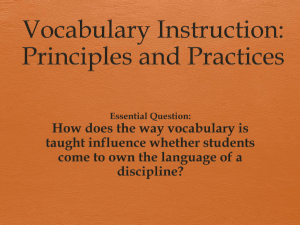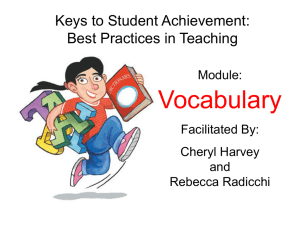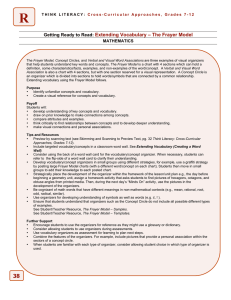Concept Teaching/Frayer Model
advertisement
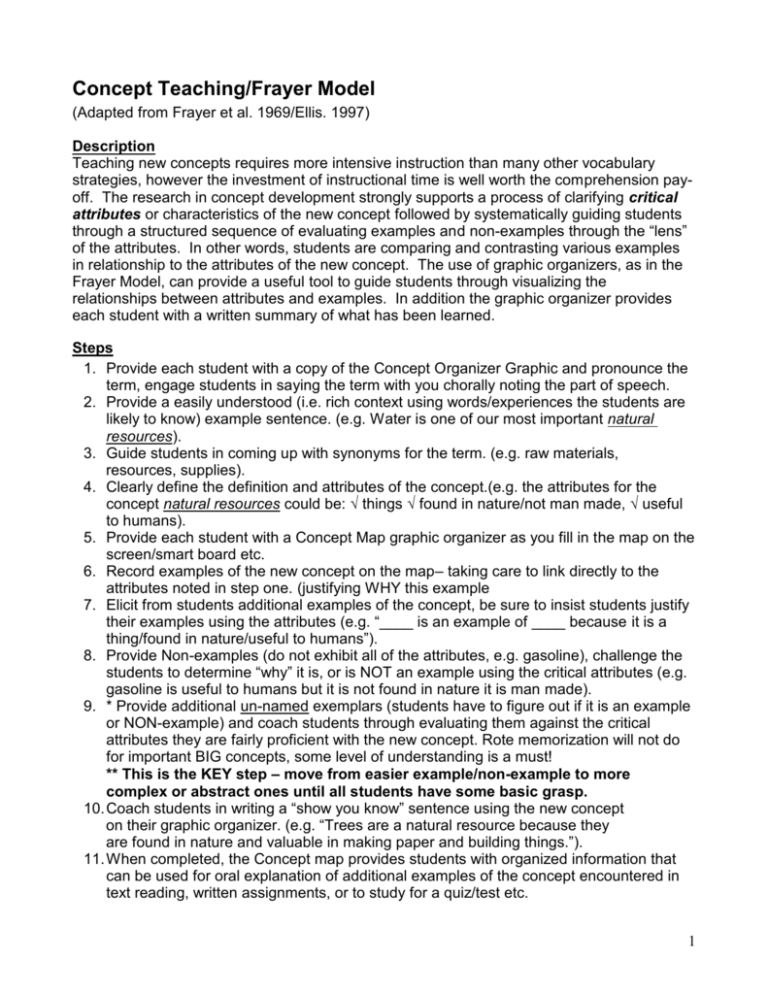
Concept Teaching/Frayer Model (Adapted from Frayer et al. 1969/Ellis. 1997) Description Teaching new concepts requires more intensive instruction than many other vocabulary strategies, however the investment of instructional time is well worth the comprehension payoff. The research in concept development strongly supports a process of clarifying critical attributes or characteristics of the new concept followed by systematically guiding students through a structured sequence of evaluating examples and non-examples through the “lens” of the attributes. In other words, students are comparing and contrasting various examples in relationship to the attributes of the new concept. The use of graphic organizers, as in the Frayer Model, can provide a useful tool to guide students through visualizing the relationships between attributes and examples. In addition the graphic organizer provides each student with a written summary of what has been learned. Steps 1. Provide each student with a copy of the Concept Organizer Graphic and pronounce the term, engage students in saying the term with you chorally noting the part of speech. 2. Provide a easily understood (i.e. rich context using words/experiences the students are likely to know) example sentence. (e.g. Water is one of our most important natural resources). 3. Guide students in coming up with synonyms for the term. (e.g. raw materials, resources, supplies). 4. Clearly define the definition and attributes of the concept.(e.g. the attributes for the concept natural resources could be: √ things √ found in nature/not man made, √ useful to humans). 5. Provide each student with a Concept Map graphic organizer as you fill in the map on the screen/smart board etc. 6. Record examples of the new concept on the map– taking care to link directly to the attributes noted in step one. (justifying WHY this example 7. Elicit from students additional examples of the concept, be sure to insist students justify their examples using the attributes (e.g. “____ is an example of ____ because it is a thing/found in nature/useful to humans”). 8. Provide Non-examples (do not exhibit all of the attributes, e.g. gasoline), challenge the students to determine “why” it is, or is NOT an example using the critical attributes (e.g. gasoline is useful to humans but it is not found in nature it is man made). 9. * Provide additional un-named exemplars (students have to figure out if it is an example or NON-example) and coach students through evaluating them against the critical attributes they are fairly proficient with the new concept. Rote memorization will not do for important BIG concepts, some level of understanding is a must! ** This is the KEY step – move from easier example/non-example to more complex or abstract ones until all students have some basic grasp. 10. Coach students in writing a “show you know” sentence using the new concept on their graphic organizer. (e.g. “Trees are a natural resource because they are found in nature and valuable in making paper and building things.”). 11. When completed, the Concept map provides students with organized information that can be used for oral explanation of additional examples of the concept encountered in text reading, written assignments, or to study for a quiz/test etc. 1 Tips for Mixed Ability Classrooms 1. Demonstrate the use of the Concept Map/Frayer Model process using concepts that are generally familiar to students BEFORE tackling something that is totally unfamiliar, this will allow students to become comfortable with the kind of relational thinking required to evaluate a concept in terms of it’s attributes – not simply regurgitate a definition they don’t really understand. 2. Use various structured engagement tactics at each step in the instructional sequence to insure all students are making sense of the new concept. For example, using Think-Pair-Share, provide a “NON-example” and prompt each student to decide if the item in question has all of the attributes required to be an example of the new concept, then have them share with their partners, then clarify whole class. 3. Underprepared readers often have difficulty in making connections between our teaching and the text. Explicitly link the new concept, using the Concept Map, to various examples and non-examples that you’ve identified in a reading. For example, if the concept is “altruism”, stop during passage reading and evaluate the characters behavior in terms of the attributes on the Concept Map. Sources 1. Ellis, E. (1997). The Clarifying Routine. Edge Enterprises, Lawrence Kansas. 2. Frayer, D.A., & Klausmeier, H.G. (1969). A schema for testing the level of concept mastery, Technical Report #16. The University of Wisconsin. 2
